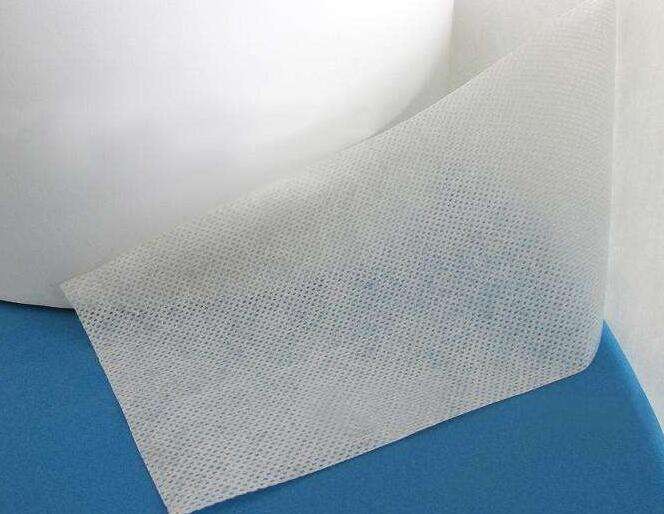At present, non woven fabrics have been widely used in industry, agriculture, medical and other fields, and also play an important role in the development of the national economy. With the development of society, the industrialization of non woven fabric production has been continuously improved. Hot rolling process is a common technology in non woven fabric production and has broad development prospects. This paper mainly discusses the influence of hot rolling temperature, pressure and speed on the production quality of thermal bond non woven fabric.
The main function of the temperature produced by the roll is to soften and melt part of the fabric, and finally consolidate it into cloth. The melting point of polypropylene is 165 ℃. When this temperature value is reached, plus the roll pressure, the fiber web can reach the melting state. In this production process, roll sticking is a common problem, and the fiber is easy to embrittle and its strength is insufficient. Therefore, in order to avoid these problems, it is necessary to reduce the set temperature appropriately so that its value is below the melting point of polypropylene. Thermal bond non woven fabric products differ in weight and thickness, so these differences should be fully considered when setting the roll temperature. The temperature requirements of thin products are relatively low, while the products with large thickness need to be produced at a higher temperature. If the hot rolling temperature is set too high, roll sticking will occur, making the thermal bond non woven hard and brittle, and the quality can not meet the standard. Therefore, the appropriate hot rolling temperature setting is a very noticeable problem.

In the application of hot rolling bonding process, the pressure generated by the roll line is used to compact the fiber web. In this process, the fiber will generate heat, play its role in heat conduction, and the polymer will begin to diffuse and flow after melting. In the production process, if the pressure released by the hot rolling line is insufficient, it will affect the compaction density of the fiber web, make the bonding point not firm enough, and reduce the strength of the non woven fabric. If the pressure produced by the hot rolling line is too large, the polymer on the fiber network will not diffuse well, and the produced non woven fabric is easy to break.
The production of thermal bond non woven fabric appears with the diversity of people's needs. Therefore, in the production process, it is also necessary to clarify the actual use of the product according to the different needs of users, and reasonably adjust the hot rolling pressure according to the use way of non woven fabrics.
In the production process of thermal bond non woven fabric, the hot rolling speed is directly related to the heating and pressing time of the roll to the fiber mesh. At a certain temperature, the faster the press roll line runs, the less heat is provided to the fiber web, the worse the melting reaction effect between the fibers, and the lower the product strength. The running speed of the press roll line directly affects the time consumed by the fiber web through the jaw position. In the production of thermal bond non woven, the quality of bonding structure is closely related to heat transfer and melting effect, which are also the basis of non woven fabric production. In the production process of high-density products, attention should be paid to the adjustment of production speed to avoid its too low speed affecting normal production, adjust the roll temperature and pressure, and make up for the adverse impact of speed on thermal bonding.

To sum up, in the application of hot rolling process, roll temperature, pressure and speed have a great impact on the quality of the final thermal bond non woven fabric. Therefore, in the production process, it is necessary to accurately and properly set the actual parameters of the hot rolling process. There is an interactive relationship among these three factors. Among them, roll temperature is a relatively important factor, and roll pressure and speed play a synergistic role. In the actual production process, we need to rely on experience and production results to explore and summarize the best process parameters of roll pressure, speed and temperature, so that the hot rolling mill can work better and give full play to the maximum effect.
Comment(0)
You can comment after
SIGN IN